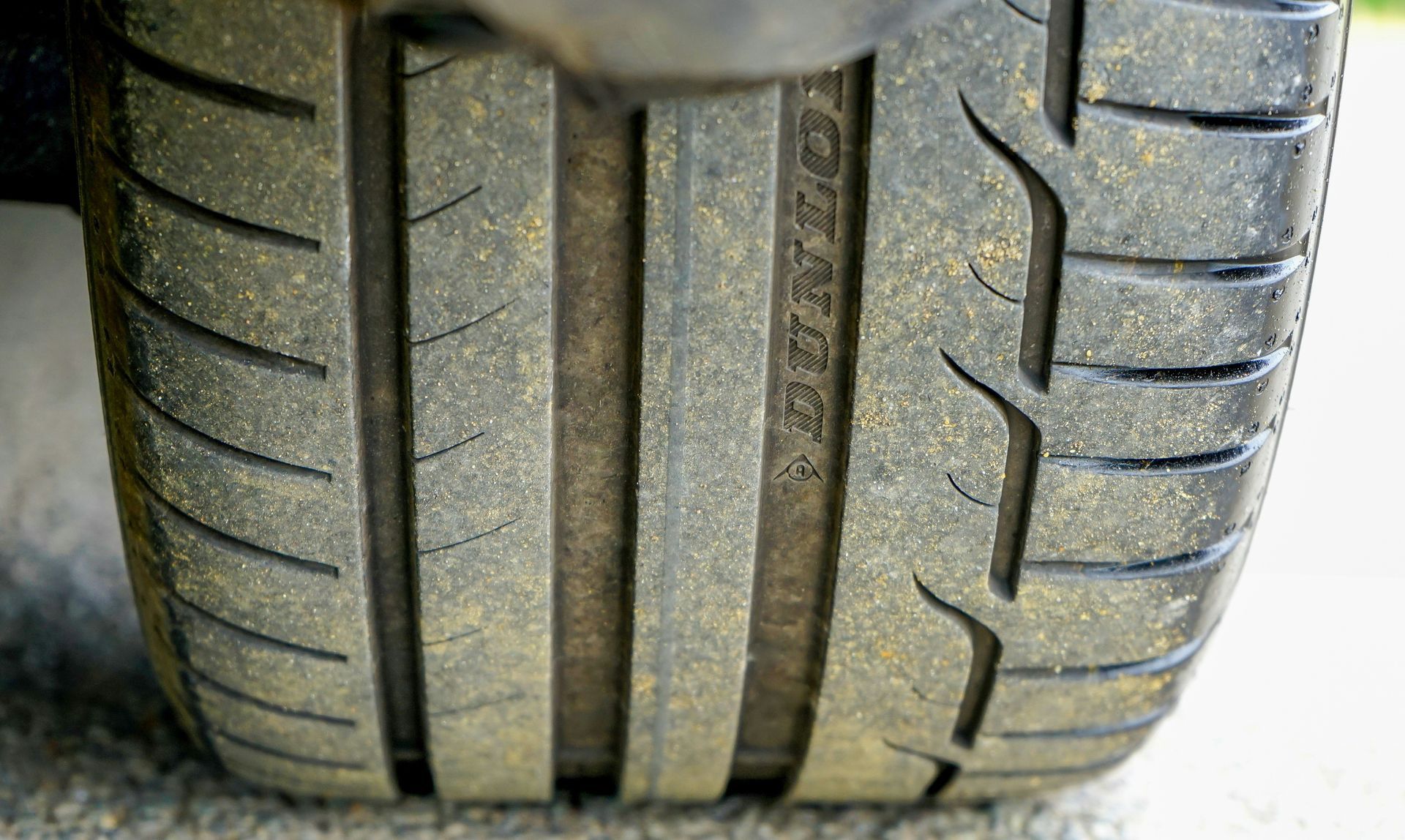Stay Safe Behind the Wheel: Spring Driving Tips
As the vibrant hues of spring paint the British countryside, many drivers relish the opportunity to hit the roads and enjoy the season's beauty. However, with the shifting weather and increased roadway activity, spring driving presents its unique set of challenges. Whether it’s dodging unexpected wildlife, navigating potholes, or dealing with unpredictable weather, staying safe behind the wheel requires more than just basic driving skills. In this article, we’ll delve into the essential tips and guide you to getting your car ready for spring .
Understanding Spring Driving Hazards
Springtime in the UK often means more than just blooming flowers; it signals an uptick in wildlife activity, particularly on rural roads. Animals are more active, often crossing roads unexpectedly, posing a significant risk to drivers. Keeping an eye out for wildlife signs and reducing speed in rural areas can help mitigate these risks.
Additionally, spring showers and melting ice can reveal potholes that were hidden during the winter months. These road conditions can be treacherous, as potholes may damage your vehicle’s suspension or tyres. Wet conditions further complicate matters, making roads slippery and increasing the chance of accidents.
Spring weather is notoriously unpredictable. One moment the sun is shining, the next you're caught in a downpour. These sudden changes can drastically reduce visibility and make roads slippery. As a driver, it’s crucial to adjust your speed and following distance to account for these conditions, ensuring road safety for yourself and others.
Moreover, the variability in temperatures can lead to unexpected frost on roads, particularly in the early morning. Foggy mornings are also more common during spring, creating low visibility and requiring extra caution. While longer daylight hours are generally welcomed, they can also result in increased glare during early morning and late afternoon drives. Investing in a good pair of sunglasses and keeping your windshield clean can greatly improve visibility.
Checking Your Vehicle's Tyres for Safety
Your tyres are the only point of contact between your vehicle and the road, making their condition paramount to safe driving. As you prepare for spring travels, it’s important to prioritise tyre maintenance and checks.
Proper tyre tread depth is essential for maintaining grip on wet roads. Insufficient tread can lead to hydroplaning, where your tyres lose contact with the road surface, posing a serious safety risk. Regularly check your tread depth using a tread depth gauge, and replace tyres if they fall below the legal limit.
Correct tyre pressure is equally important, as it optimises both fuel efficiency and vehicle handling. Under-inflated tyres may cause the vehicle to consume more fuel and increase the risk of blowouts. Aim to check your tyre pressure at least once a month, and especially before long journeys.
To prolong the life of your tyres and enhance safety, consider rotating them regularly. This practice ensures even wear and can extend the lifespan of your tyres. A reliable gauge is your best friend for weekly tyre pressure checks, ensuring they are inflated to the manufacturer’s specifications.
Additionally, inspect your tyres for any cuts, bulges, or foreign objects that might have become lodged in them. These can compromise the tyre’s integrity and should be addressed immediately. Remember, a stitch in time saves nine, so proactive vehicle maintenance is always worth the effort.

Adjusting Your Driving for Spring Conditions
Spring’s diverse weather conditions require you to be adaptable in your driving approach. Adjusting your driving techniques to align with these conditions is key to maintaining safety on the road.
When spring showers hit, it’s important to reduce your speed to maintain control of your vehicle. Wet roads can be unpredictable, and slowing down gives you more time to react to unexpected situations. Increasing your following distance also provides a buffer, ensuring you have ample stopping time. Activating your headlights during rain improves visibility and helps other drivers see you.
Using gentle braking and acceleration can help avoid skidding. Sudden movements can cause your vehicle to lose traction, especially on slippery surfaces. Additionally, paying attention to road signs indicating seasonal hazards such as flooding or wildlife crossings can keep you safe.
Wet roads are a common sight in spring, and handling them with care is crucial. Engage your vehicle’s anti-lock braking system (ABS) for better control during sudden stops. This system prevents the wheels from locking, allowing you to steer while braking.
Using lower gears can help maintain traction on slippery surfaces. Avoid using cruise control in heavy rain, as it can reduce your ability to respond quickly to changing road conditions.
Steering smoothly and avoiding abrupt movements can prevent skidding. Slow down before entering curves or turns to maintain control. Don’t forget to use your headlights during rain to improve visibility and signal your presence to other drivers. These simple safety tips can make all the difference when navigating spring roads.
Dealing with Potholes on the Road
Potholes are a perennial problem for British roads, and spring is when they tend to surface with a vengeance. Knowing how to handle them can save your vehicle from potential damage. Keeping your eyes on the road is the first line of defence against potholes. Advance detection allows you to safely avoid them or reduce speed before hitting them. Drive cautiously in areas known for potholes, and be wary of puddles, as they can conceal deep potholes.
At night, when visibility is reduced, staying alert becomes even more critical. Potholes are harder to spot in the dark, so using vehicle maintenance practices like checking your headlights can aid in spotting these road hazards.
If you do hit a pothole, hold the steering wheel tightly to maintain control. Avoid braking suddenly while in a pothole, as this can cause further damage. Once through it, pull over safely to inspect your vehicle for any visible damage, particularly to the tyres and suspension.
Reporting significant potholes to local authorities for repair can also contribute to safer roads. Remember, proactive road safety not only benefits you but all drivers sharing the road.
Ensuring Proper Visibility When Driving in Spring
Good visibility is crucial for safe driving, especially during the fluctuating weather conditions of spring. Ensuring that your windshields and mirrors are in top condition can significantly improve your ability to see and react to road hazards. Clear windshields are essential for maintaining visibility during unpredictable spring weather. Dust, pollen, and rain can all impact your view, so it’s important to clean your windshield regularly. Adjust your mirrors to minimise blind spots and maximise your field of view.
Regularly check your wiper blades and replace them if they leave streaks. Streaky blades can severely impair your vision during rain, so don’t overlook this simple yet important component of your vehicle care routine. Additionally, clean your vehicle’s headlights to improve night-time visibility, which is especially crucial in rural or poorly lit areas.
In low visibility conditions, such as fog or heavy rain, use your fog lights to enhance safety. These lights cut through fog, making your vehicle more visible to others on the road. Keep interior windows de-misted to avoid condensation, which can obscure your view.
Maintaining a safe distance from the vehicle ahead allows for adequate reaction time. In thick fog, using your horn can signal your presence to other drivers. These safety tips can drastically improve your driving experience during challenging weather conditions.
Importance of Regular Vehicle Maintenance for Safety
Regular maintenance is the backbone of vehicle safety. Ensuring that your vehicle is in optimal condition can prevent accidents and breakdowns, keeping you and others safe on the road. Routine checks can identify potential issues before they escalate into major problems. A well-maintained vehicle performs better in adverse conditions, and regular servicing ensures that safety systems function correctly. This vehicle care reduces the risk of breakdowns and accidents, providing peace of mind whenever you’re on the road.
Moreover, a properly maintained vehicle is more reliable and efficient, helping you avoid unexpected repairs and expenses. By prioritising regular maintenance, you’re investing in your safety and that of others sharing the road.
Scheduling regular service appointments keeps your vehicle in top condition. During these checks, ensure that fluid levels, including oil, coolant, and brake fluid, are adequate. This simple step can prevent engine overheating and other mechanical issues.
Check that your brakes are responsive and free from wear and tear. Ensuring that lights and signals are in working order is also crucial, as they are vital for communicating with other drivers. These safety tips encompass the basic aspects of vehicle care that should never be overlooked.

Staying Alert and Focused on the Road
Staying alert is one of the most effective ways to prevent accidents. Being focused allows you to react quickly to unexpected changes on the road and anticipate potential hazards.
Attentive drivers can quickly react to unexpected changes on the road. This heightened awareness helps in anticipating potential hazards and avoiding accidents. Staying focused also reduces the risk of missing important road signs, which are crucial for maintaining road safety.
Being aware of your surroundings can prevent collisions with other vehicles or wildlife. This level of alertness not only protects you but also contributes to the safety of everyone sharing the road.
Minimising the use of in-car technology while driving can significantly reduce distractions. Keeping your eyes on the road and avoiding unnecessary distractions is crucial for maintaining focus.
Taking regular breaks during long trips helps maintain alertness. Fatigue can severely impact your ability to drive safely, so it’s important to rest when needed. Prioritising clear communication with passengers can also help maintain concentration, ensuring that your attention remains on the road.
Emergency Preparedness for Spring Driving Situations
Being prepared for emergencies is a vital aspect of safe driving. Having the right items and knowing what steps to take can make all the difference in challenging situations.
Carrying a first-aid kit is essential for addressing minor injuries during breakdowns or accidents. A high-visibility jacket and warning triangle can alert other drivers to your presence, enhancing safety during roadside emergencies.
Keeping a spare tyre and the necessary tools for changing a flat is crucial. A charged mobile phone and portable charger ensure you can call for help if needed. These safety tips can provide peace of mind and readiness for any situation.
If you experience a breakdown or accident, move your vehicle to a safe location away from traffic if possible. Turning on your hazard lights alerts other drivers to your situation.
Contact roadside assistance or emergency services for help. If conditions are unsafe outside, it’s advisable to stay in your vehicle and wait for assistance. These emergency situations require calm and decisive action to ensure your safety.
In conclusion, spring driving in the UK presents unique challenges that require awareness and preparation. By understanding the hazards, maintaining your vehicle, and adjusting your driving techniques, you can enjoy the beauty of spring while staying safe on the road. Remember, proactive measures today can prevent accidents tomorrow.

